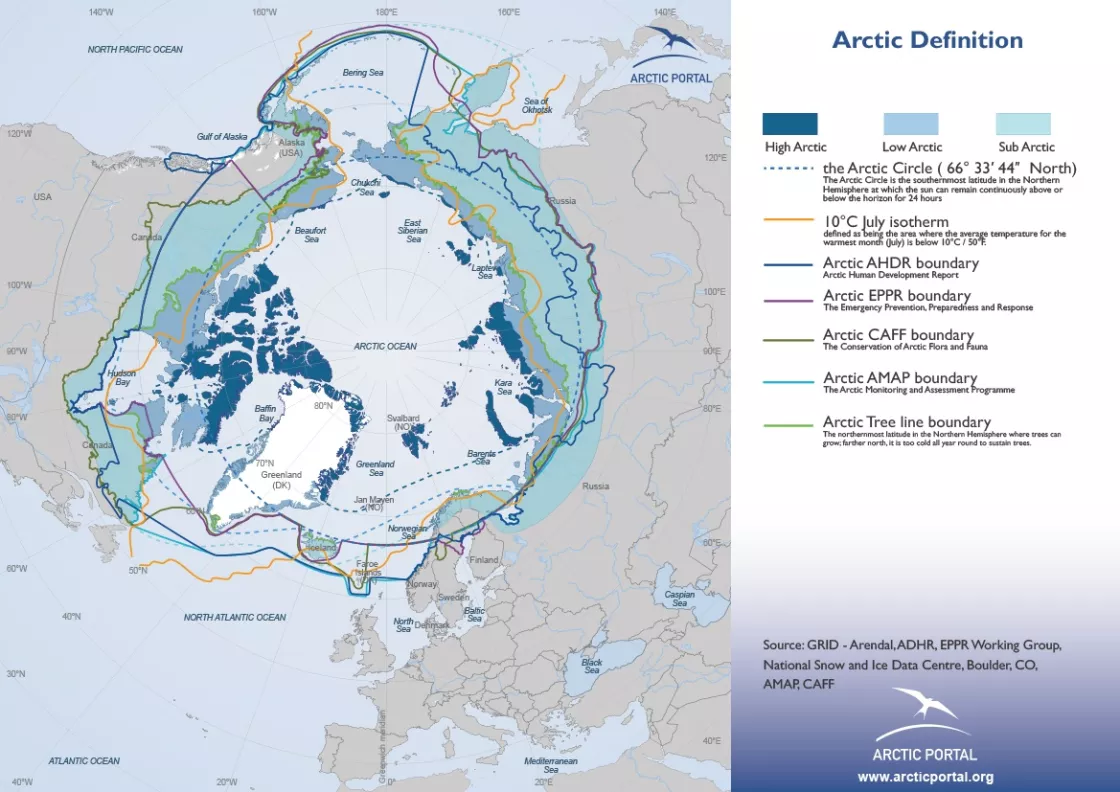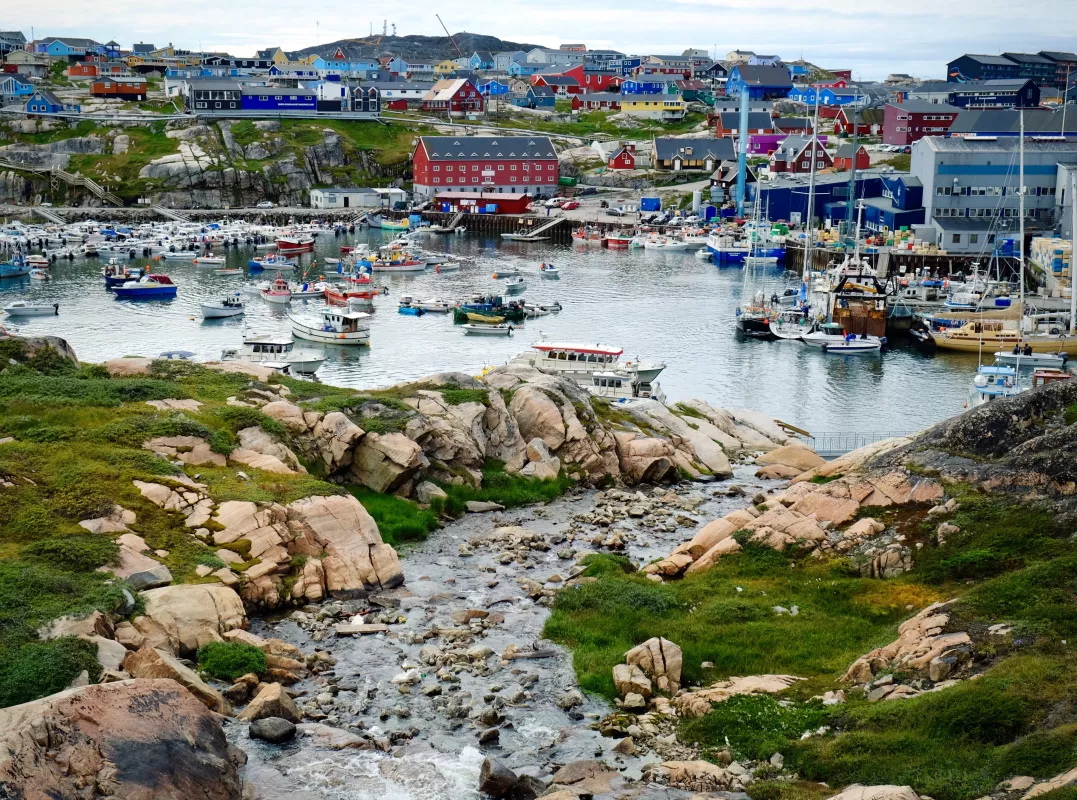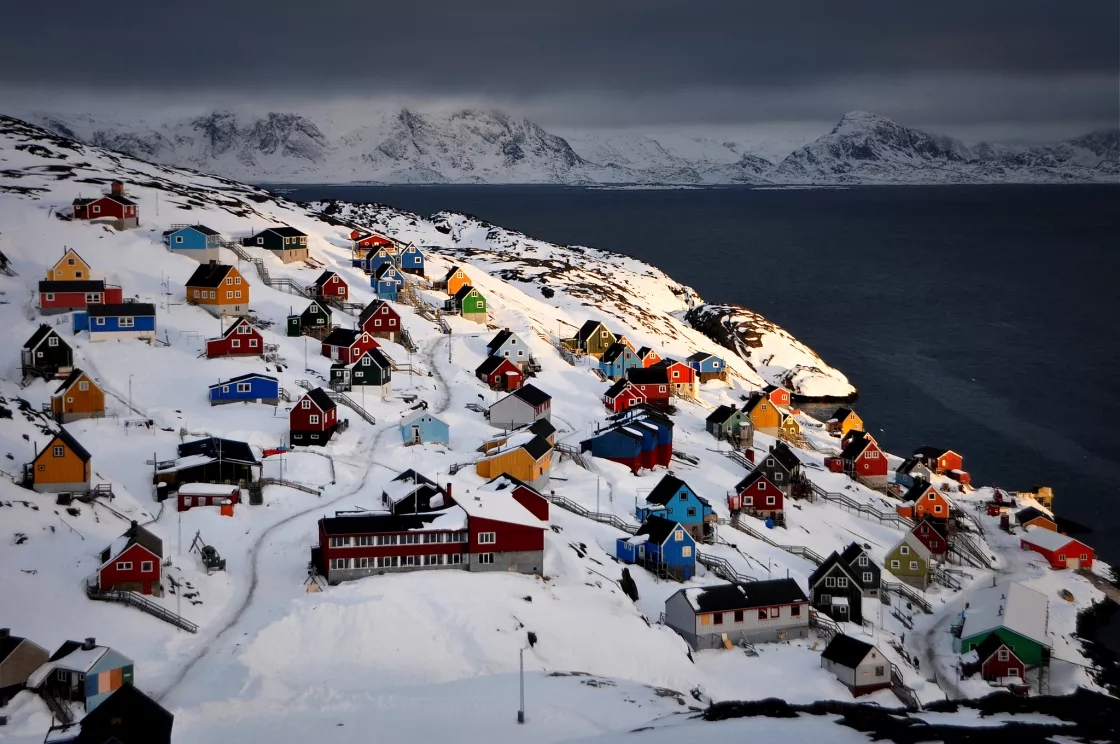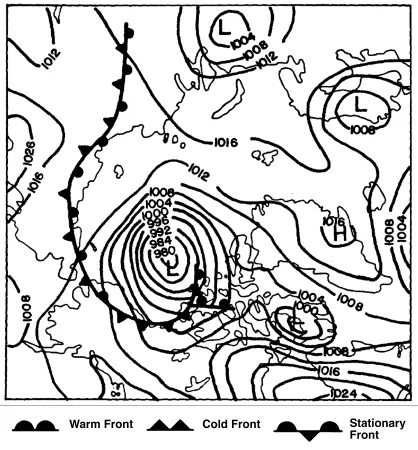Arctic Weather and Climate
Overview
The Arctic is often referred to as the Earth’s icebox, helping cool the planet and shaping its jet stream. Warming in the Arctic influences conditions elsewhere around the globe—what happens in the Arctic does not stay in the Arctic.
The Arctic is not just a geographic region but also a system—physical, biological, chemical, and climatological. The region encompassing the north polar region (the area north of the Arctic Circle) is largely an ocean surrounded by land. On the surface of the ocean, sea ice grows throughout the autumn and winter, and melts throughout the spring and summer. On the sea ice and on land, snow accumulates during the autumn and winter, and melts away over the summer. In the far north, seasonal snow retreat over land exposes tundra, which greens and blooms in the warmest months of the year. Moving southward, tundra slowly transitions to forest, which also sees significant seasonal snow accumulation.
Although the Arctic may seem far removed from the rest of the globe, Arctic climate and weather are closely linked with climate and weather elsewhere. Cold conditions in both the Arctic and Antarctic play key roles in global circulation patterns in the atmosphere and ocean. In other words, weather phenomena at lower latitudes, such as heat waves, cold snaps, storms, floods, and droughts, can be strongly shaped by what is happening in the Arctic. At the same time, the Arctic's location and configuration creates northern phenomena rarely found elsewhere.
What is the Arctic?
The region surrounding the North Pole consists of a large ocean surrounded by land. This ocean, called the Arctic Ocean, is like no other ocean on Earth, and because of its special location and climate, the lands that surround it are unique.
A common boundary used to define the Arctic is the region above the Arctic Circle, an imaginary line that circles the globe at approximately 66° 33' N (dashed blue circle in the map above). The Arctic Circle marks the latitude above which the sun does not set on the summer solstice, on or about June 21, and does not rise on the winter solstice, on or about December 21. At the North Pole, the sun rises once each year and sets once each year: there are six months of continuous daylight and six months of continuous night. At lower latitudes, but north of the Arctic Circle, the number of days of continuous light and dark is intermediate.
Some scientists define the Arctic as the area north of the Arctic tree line (green line in map above), where the landscape is frozen and dotted with shrubs and lichens. The tree line broadly corresponds to where the average July summer temperature does not rise above 10 °C (50 °F). In some areas, trees grow well to the north of the Arctic circle.
What is the difference between weather and climate?
Weather is the day-to-day state of the atmosphere, and its short-term variation in minutes to weeks. People generally think of weather as the combination of temperature, humidity, precipitation, cloudiness, visibility, and wind. We talk about changes in weather in terms of the near future such as: How hot is it right now? What will it be like today? Or, will we get a snowstorm this week?
Climate is the weather of a place averaged over a period of time, often 30 years. Climate information includes the statistical weather information that tells us about typical weather, as well as the range of weather extremes for a location.
We talk about climate change in terms of years, decades, centuries, even millions of years. Scientists study climate to look for trends or cycles of variability, such as the changes in wind patterns, ocean surface temperatures, and precipitation, to determine the causes of these variations and trends.
What is Arctic climate?
Like other places on Earth, the weather in the Arctic varies from day to day, from month to month, and from place to place. But the Arctic is a unique place for weather and climate because of the special factors that influence it. Sunlight is perhaps the most important of those factors. Above the Arctic Circle, there is little or no solar energy in the winter, leaving the region dark and cold. What sunlight does reach the region in the winter comes in at a low angle. In summers, the sun shines for many hours or around the clock, bringing warmth and light. The Arctic experiences frequent temperature inversions. Inversions occur when cold air settles close to the ground, with warm air on top of it. Inversions separate the air into two layers, like oil and water, tending to limit the mixing of air. Over cities, inversions can trap pollutants, creating smoggy conditions that last until the inversion clears.
Scientists separate the Arctic into two major climate types. Near the ocean, a maritime climate prevails. In coastal Alaska, along with Iceland, northern Russia, and Scandinavia, the winters are stormy and wet, with snow and rainfall reaching 60 centimeters (24 inches) to 125 centimeters (49 inches) each year. Summers in the coastal regions tend to be cool and cloudy; average temperatures hover around 10 °C (50 °F).
Away from the coasts, the interior regions of the Arctic lands have a continental climate. The weather is drier, with less snow in the winter and sunny summer days. Some areas get scant precipitation and are classified as polar deserts. Winter weather can be severe, with frigid temperatures well below freezing. In some regions of Siberia, average January temperatures are lower than -40 °C (-40 °F). In the summer, the long days of sunshine thaw the top layer of frozen ground and bring average temperatures above 10 °C (50 °F). At some weather stations in the interior, summer temperatures can reach 30 °C (86 °F) or more.
Forecasting weather and predicting climate
Weather forecasters try to answer questions like: What will the temperature be tomorrow? Will it rain? How much rain will we have? Or, will there be thunderstorms? Today, most weather forecasts are based on numerical models, which incorporate observations of air pressure, temperature, humidity, and winds to produce the best estimate of current and future conditions in the atmosphere. A weather forecaster then looks at the model output to figure out the most likely scenario. The accuracy of weather forecasts depends on both the model and on the forecaster's skill. Short-term weather forecasts are accurate for up to a week. Long-term forecasts, for example seasonal forecasts, tend to use statistical relationships between large-scale climate signals, such as El Niño and La Niña, and precipitation and temperature, to predict what the weather will be like one to six months into the future.
Climate predictions take a long-term view. These predictions try to answer questions like: How much warmer will Earth be 50 to 100 years from now? How much more precipitation will there be? And how much will sea level rise? Climate predictions are made using global climate models. Unlike weather forecast models, climate models cannot use observations because there are no observations in the future.



